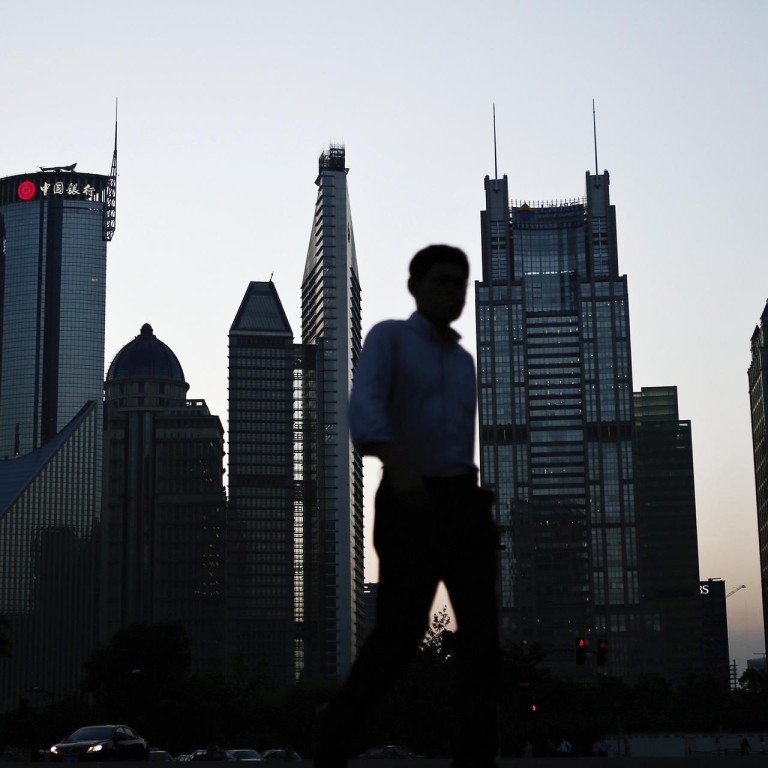
Reforms face pain test
Hold off on hailing Likonomics until we see the leadership's resolve to stick to its economic overhaul when vested interests start squealing
The International Monetary Fund did Beijing a great service by using its annual Article IV consultations with the mainland this month to call clearly for swift, significant, systemic and specific structural economic reforms.

However, the IMF did less of a service with its forecasts that the mainland economy will grow 7.75 per cent this year and 7.7 per cent next year.
It is not merely that the fund's forecasts are at what would be called the optimistic end of the consensus of economists, but that it plays along with the dangerous mythical games of Beijing's clearly pre-cooked economic growth statistics.
Marc Faber, the Hong Kong and Chiang Mai-based investor, has long derided the mainland for its great ability to tell in advance what its growth rate will be, basically because it makes the figures up. He says: "The Chinese economy is growing at something like 4 per cent per annum, and without huge credit expansion there would probably be no growth at all."
Bill Smead, of Smead Capital Management, says he would like to take mainland economic officials to the racetrack to use their predictive skills because they have a near-perfect record of being able to predict growth when other, more sophisticated countries have difficulty peering through the fog of the next three months.
Beijing has yet to learn that officials who live by economic statistics risk dying by them when the numbers inevitably turn down. Having boasted of growth of 8 to 10 per cent for years, how will its leaders be able to survive when growth drops to the 3 to 4 per cent level that Michael Pettis of Peking University says is needed to achieve an overhaul of its growth model and capital allocation process?
The IMF should be ashamed of itself for not critically analysing the mainland's growth statistics. It is one thing for investment bankers, who believe that they have to inflate the numbers as part of buttering up Beijing, but we should expect more rigour and some scepticism from the chief surveillance body for the global economy.
But, IMF please note, even some investment bankers have come to question how sustainable the mainland's high growth rates are.
In a research note last month, Goldman Sachs China strategist Ha Jiming said: "China has basically said goodbye to 8 per cent GDP growth in spirit, if not in statistics, and will have to embrace slower growth, with the average annual growth rate in the next seven years to 2020 perhaps falling to the vicinity of 6 per cent."
Ha makes an interesting distinction between spirit and statistics.
Nomura gives odds of 30 per cent on mainland growth falling below 7 per cent this year.

Too many people throw their critical instincts out the door when they consider China. The best that can be said is that its leaders are making the right noises about economic reforms.
But, as the IMF noted, time is running out.
"Since the global crisis, a mix of investment, credit and fiscal stimulus has underpinned activity," it warned. "This pattern of growth is not sustainable and is raising vulnerabilities. While China still has significant buffers to weather shocks, the margins of safety are diminishing."
It is far too early to be talking of Likonomics in honour of Premier Li Keqiang. So far, Li has resisted pressure to pump more money into the economy to prop up growth. He has yet to face the real test when the entrenched vested interests with their political clout begin to squeal that they are hurting - as they will be hurt if reform gets serious.
Li's problem is that it is easier to accomplish big reforms when the economy is booming. But the mainland's is not, and traditional engines, such as manufacturing and exports, are facing tough headwinds. Any serious reforms will further lower the growth rate and government spokesmen have talked of the "temporary pains" of restructuring.
But it is an immense task, which will involve lowering investment and increasing consumption, reducing the role of the state sector and improving the badly flawed way that credit is allocated.
Just to take the question of investment, it has risen from 42 per cent of gross domestic product in 2007, already extremely high, to more than 48 per cent. The mainland's incremental capital output ratio (ICOR - the marginal amount of capital to produce the next unit of output) has also risen to an expensive five.
The higher the ICOR, the lower the productivity of capital. In comparison, Japan and South Korea had ICORs of 3.2 during their years of heady growth, and Taiwan's was 2.7.
If China is to rebalance away from excessive debt-fuelled investment, then investment must grow at a lower rate than the economy as a whole.
At the same time, to get household consumption from its low levels of 35 per cent of GDP to 50 per cent, more normal for a developing country, consumption growth would have to exceed GDP growth by almost four percentage points a year. With a growth rate of 7.5 per cent, that would be crazily high.
So, it is surely time for Beijing, in its own interests, to ditch GDP growth targets.
Pettis argues that the real economic number that counts is the growth rate in disposable household income. If this can continue to grow at 6 to 7 per cent, then it does not matter to social stability if the economy itself grows at only 4 or 3 per cent while the air goes out of the credit bubble.
But there is the real rub. The key to maintaining household disposable income growth is to reverse hidden transfers from households to the state. But to do this will mean squeezing the political vested interests. This is Li's real test.

